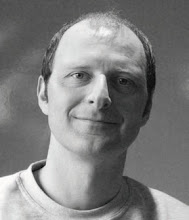Gillian Lawler at The Cross Gallery
Gillian Lawler is one of a new generation of young Irish painters who manage to bridge tradition and the demands of an art audience for whom working in paint is verging on anachronism – a falsehood, of course. It is to the credit of the Cross Gallery that quite a number of these painters have been associates of the gallery since it opened its doors in 1999.
I’m thinking specifically here of Sonia Shiel and David Begley, as well as Lawler. Each of these artists can be seen to have re-assessed traditional, if not classical, inspirations in recent years by bringing their own slants; Begley to the human figure, Shiel to the natural landscape, and now Lawler to the urban. All share a love of surface and the materials of the painted medium.
Gillian Lawler’s work first caught my attention with compositions redolent of drumlins or magmatic bulges, seemingly landscape based, but very stylised. However, the decisively appeal for me was not so much the organic geometry of the compositions as the wonderfully worked patina in which they were rendered. There was no hint of that ethereal clouding into abstraction that so many landscape-based abstracts choose to wrap themselves in. Here was a determined and interesting, regimented deterioration of composition and painted surface – allowing the underpinning drafts to become something worked intensely into existence.
Then, last summer, Lawler was awarded the prestigious Hennessy Craig Scholarship and The Whyte’s Award at the 2007 RHA Annual exhibition for work which had moved on from the organic curves of previous sources to embrace grid elements and areas of carefully underplayed brighter pigments, bringing a fresh momentum to her destructed grounds.
The current exhibition develops these elements further. While some organic curves reappear, they are as ambients to those grid-based elements which have now moved assuredly to a dimensional centre stage in all of the compositions on show.
The most striking piece, to my eyes, is a large canvas named ‘City on Stilts II’. Here, cuboid forms merge to a distressed, melded plane – calling to mind medieval cities, antique cabinets as well as some possible future tribal habitat. Dominent colours here are the eroded complementaries of Indigo and Apricot (also reminiscent of Shiel’s pallet) but with an aging influence of pale verdigris. A ground of parallels suggest municipality, tillage and the corrugation of machine processes. All is quiet however, the stillness of early morning in the city, or rather of the city viewed from outside.
Herein lies a key strength of the work on show. Each canvas presents a sense of an environment observed, as if by a cultural outsider – but which also realises itself as a contemplative inner vision. Where are these places – within or without? Who resides in their viewing?
Other standout works are a large ‘Untitled’ canvas, which calls to mind a timeworn apartment or office block, but also resembles some metaphysically chainsawed woodblock in its iteration of negative grid spaces. Of the medium sized canvases, ‘Tower II’ encapsulates that sense of ‘inner habitat’ as it’s subject suspends between ‘ground’ and ‘sky’ of questionable logic. All are rendered with love of surface that fuses deterioration and destruction with wonder and beauty.
Overall this is an excellent show by a painter who seems to have found her own ‘third place’ between tradition and the new. Larger pieces are fulfilled with no loss of craft compared with the medium sized canvases more familiar to me from past work. Despite the emphasis on ‘modern building developments’ in the artist’s statement and the description of ‘primarily abstract meditations on the possible long-term rise and fall of cities’ – I find these works resonate with deeper instincts. In perusing the common planes and surfaces of the urban human habitat, it seems that Lawler is triggering the locks of inner rooms and perspectives.
The exhibition runs until 3rd May. An edited version of this review appeared in the Evening Herald HQ magazine of April 24.

